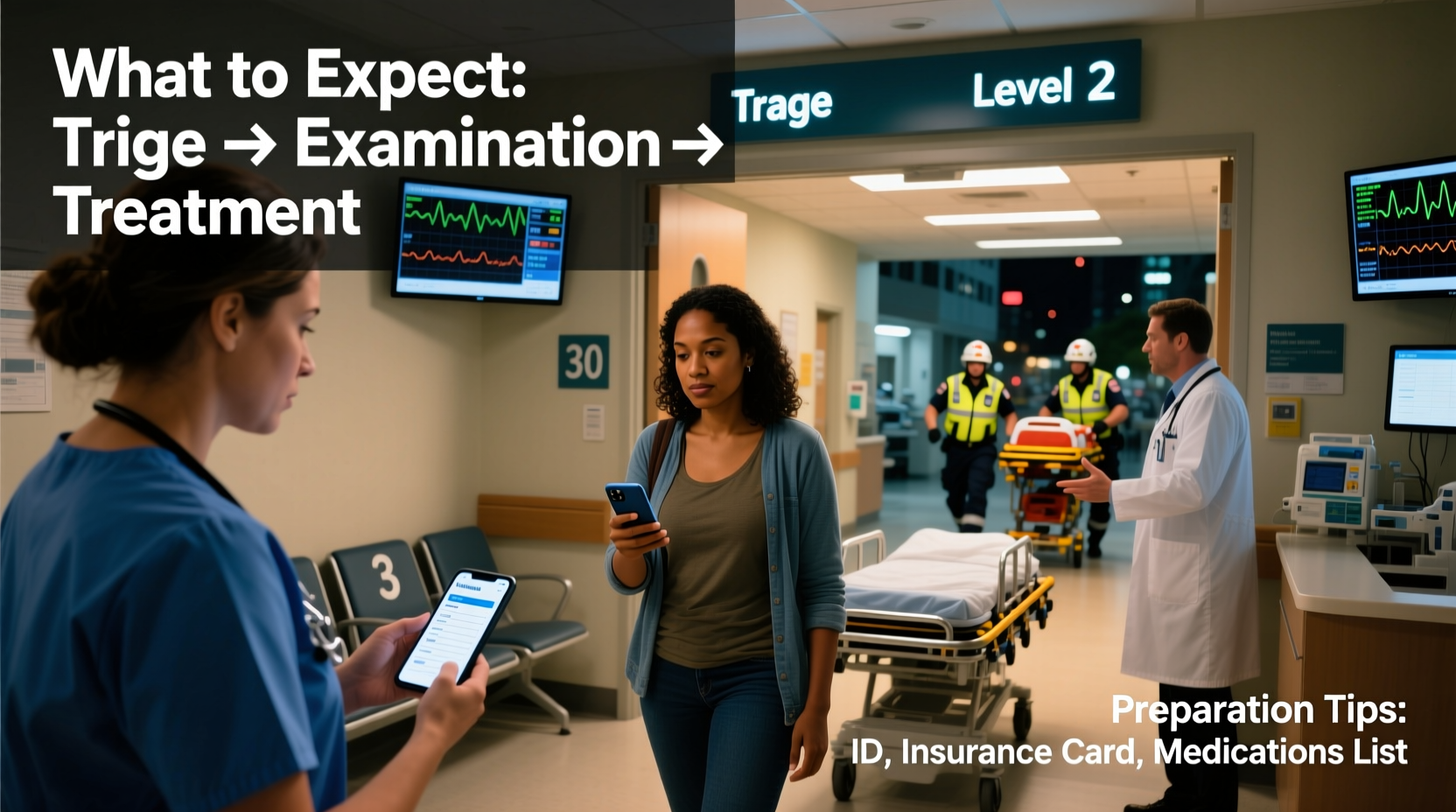Walking into an emergency room (ER) can be overwhelming, especially during a medical crisis. Whether it's a sudden injury, chest pain, or a severe allergic reaction, knowing what to do before and during your visit can reduce anxiety, speed up treatment, and improve outcomes. Emergency departments are designed to handle urgent conditions, but they operate under strict protocols that prioritize severity over convenience. Understanding this system—and preparing accordingly—can make a critical difference.
When to Go to the Emergency Room

Not every health issue requires an ER visit. Knowing when to seek emergency care ensures you receive timely help without overburdening already strained systems. Seek immediate medical attention if you or someone else experiences any of the following:
- Chest pain or pressure lasting more than a few minutes
- Difficulty breathing or shortness of breath
- Sudden weakness, numbness, or confusion (signs of stroke)
- Severe bleeding that won’t stop with pressure
- Head trauma with loss of consciousness or vomiting
- High fever in infants under 3 months old
- Poison ingestion or drug overdose
- Uncontrollable pain
What to Bring: Your Emergency Preparedness Checklist
Arriving at the ER unprepared can delay diagnosis and treatment. Having essential information and items on hand streamlines the intake process and helps providers make informed decisions quickly.
Essential Items to Bring
- Photo ID and insurance card – Required for registration and billing.
- A list of current medications – Include names, dosages, and frequency. This prevents harmful drug interactions.
- Medical history summary – Note chronic conditions (e.g., diabetes, heart disease), allergies, and past surgeries.
- Contact information for your primary care physician – Allows ER staff to coordinate follow-up care.
- Charger for your phone – Staying connected helps manage logistics and reduces isolation during long waits.
- A small comfort item – A light sweater, water bottle, or snack (if allowed) can improve comfort.
“Patients who bring their medication lists get diagnosed 30% faster. It’s one of the most effective ways to support your own care.” — Dr. Lena Torres, ER Physician and Patient Safety Advocate
What Happens When You Arrive at the ER?
The ER follows a standardized triage system to assess and prioritize patients based on medical urgency, not arrival time. Here’s what typically happens upon entry:
Step-by-Step: The ER Process
- Triage Assessment: A nurse evaluates your vital signs and symptoms within minutes of arrival. This determines your priority level using systems like the Emergency Severity Index (ESI).
- Registration: You’ll provide personal and insurance details. If you’re unable, a companion can assist.
- Initial Evaluation: A physician or nurse practitioner conducts a focused exam and orders tests (blood work, imaging, EKG).
- Testing and Monitoring: You may wait for lab results or imaging while being monitored for changes.
- Treatment Plan: Based on findings, the team decides whether to discharge you, admit you to the hospital, or transfer you to a specialist unit.
Wait times vary widely depending on hospital volume and case severity. A patient with chest pain will be seen before someone with a minor sprain—even if the latter arrived earlier.
Do’s and Don’ts During Your ER Visit
| Do’s | Don’ts |
|---|---|
| Be honest about symptoms and substance use (including alcohol or drugs). | Don’t exaggerate symptoms to move up the queue—misrepresentation delays real emergencies. |
| Ask questions about procedures, medications, and next steps. | Don’t demand specific treatments; trust clinical judgment. |
| Bring a trusted person to help communicate and remember instructions. | Don’t leave the department without formal discharge paperwork. |
| Follow up with your primary doctor after discharge. | Don’t ignore post-ER care instructions—complications can arise later. |
A Real ER Experience: What One Patient Learned
Mark, a 47-year-old teacher, experienced sudden left arm pain and nausea during a school meeting. He initially dismissed it as stress but agreed to let a colleague drive him to the ER when the discomfort intensified.
Upon arrival, he was triaged within two minutes. His blood pressure was elevated, and an EKG showed early signs of a heart attack. Because he had his medication list—including a recent prescription for high cholesterol—the team quickly ruled out non-cardiac causes.
He received clot-busting medication within 25 minutes of arrival and was transferred to a cardiac unit. “I didn’t think I was having a heart attack,” Mark said later. “But bringing my med list and going in right away saved my life.”
This case highlights the importance of recognizing subtle symptoms and being prepared. Early intervention made the difference between full recovery and permanent damage.
Frequently Asked Questions
How long will I have to wait in the ER?
Wait times depend on how sick you are, not when you arrive. Low-acuity cases (like minor cuts) may wait several hours, while critical cases are treated immediately. Hospitals often post average ER wait times online, but these are estimates only.
Will I get a bill even if I’m not admitted?
Yes. All services—triage, testing, consultations—are billed separately. Even if discharged, you may owe for labs, imaging, or physician fees. Check with your insurer about ER coverage to avoid surprise costs.
Can I choose which hospital to go to?
In non-life-threatening situations, yes. However, paramedics typically transport patients to the nearest appropriate facility unless directed otherwise. If transferring later, ensure medical records are shared securely.
Final Thoughts: Be Ready, Stay Calm, Act Fast
The emergency room is a vital resource for acute medical issues, but its efficiency depends partly on patient preparedness. By understanding when to go, what to bring, and how the system works, you empower yourself to navigate crises with greater confidence and control.
Keep a printed medical summary in your wallet. Talk to family members about emergency plans. And remember: hesitation can cost precious minutes in time-sensitive conditions like strokes or heart attacks.









 浙公网安备
33010002000092号
浙公网安备
33010002000092号 浙B2-20120091-4
浙B2-20120091-4
Comments
No comments yet. Why don't you start the discussion?